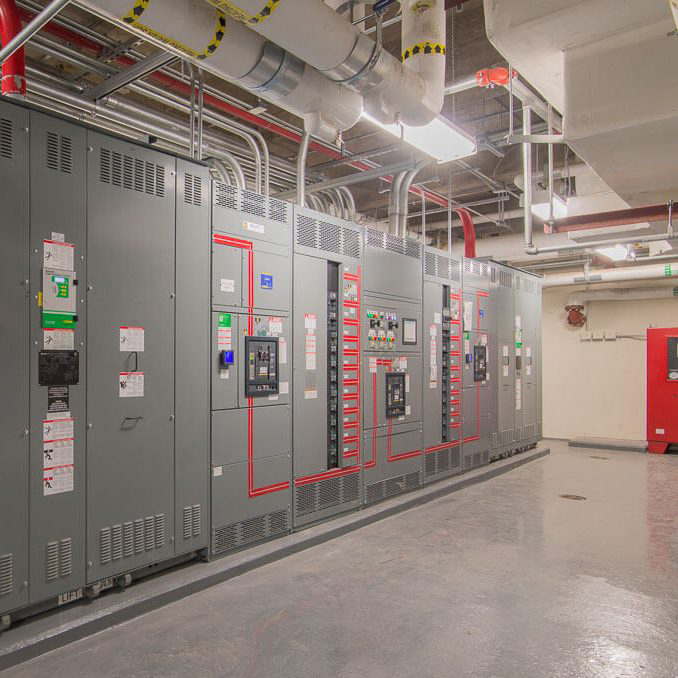The Critical Role of Protection Systems
Electrical power systems form complex networks of interconnected components—generators, transformers, transmission lines, distribution cables, and end consumers. While building services engineers typically interact only with the final distribution stages, the entire network remains vulnerable to short circuits and abnormal conditions that can cause devastating equipment damage without proper protection systems.
The foundation of any robust electrical network lies in its protection relays, circuit breakers, fuses, and associated equipment. These systems serve as the network’s immune system, detecting faults and isolating problematic sections before damage spreads throughout the system.
Historical Challenges in Protection Design
Traditional approaches to medium voltage (MV) and low voltage protection have proven inadequate. As noted by industry experts, design engineers historically underestimated the importance of these networks, implementing only basic inverse definite minimum time (IDMT) overcurrent and earth fault relays without proper coordination.
This approach created significant problems:
- Poor Coordination: Current transformer ratios were selected based solely on load requirements, with relay settings left to commissioning engineers who focused only on downstream loads
- Network-Wide Failures: Lack of upstream relay coordination led to extensive network disruption and prolonged downtimes
- Safety Risks: Failed protection devices resulted in excessive equipment damage and serious safety hazards for personnel
The Destructive Power of MV Faults
Medium voltage systems present unique challenges due to their enormous fault current potential. Unlike low voltage systems, MV faults can be catastrophically destructive within seconds. A three-phase short-circuit on an MV busbar can:
- Melt 50 kilograms of copper in one second
- Generate arc temperatures exceeding 10,000°C
- Create immediate fire and explosion risks
- Pose severe electric shock hazards to building occupants
These extreme conditions make rapid fault detection and disconnection absolutely critical for system safety and equipment preservation.
Essential Components of MV Protection Systems
Core Protection Elements
Effective MV protection requires several key components working in coordination:
- Medium voltage fuses and time limit fuses (TLFs)
- Circuit breakers for rapid disconnection
- Current transformers (CTs) and voltage transformers (VTs) for measurement
- Protection relays for intelligent fault detection and response
Primary Protection Objectives
Well-designed protection systems must achieve multiple critical objectives:
- System Stability: Prevent loss of synchronism between generators and system components that could trigger widespread shutdowns
- Equipment Protection: Limit damage from thermal, dielectric, magnetic, and mechanical stresses during fault conditions
- Cascade Prevention: Protect healthy equipment from carrying excessive fault currents beyond their ratings
- Service Continuity: Maintain electrical supply to unaffected network sections
- Economic Protection: Minimize financial losses from equipment damage and operational disruption
The Protection Study Process
Before implementing any protection scheme, engineers must conduct comprehensive protection studies (also called grading studies) that address:
Fault Type Analysis
- Three-phase faults
- Phase-to-earth and phase-to-neutral faults
- System overloads
- Equipment-specific faults (transformers, generators, motors)
System Characteristics
- Current/time characteristics of all protection devices
- Power system architecture and operational modes
- Equipment fault-withstand capabilities
- District network operator (DNO) neutral earthing methods
- Current source characteristics and fault contributions
- Load types and service continuity requirements
MV Fuses: First Line of Defense
Oil-Immersed Inline Fuses
Unlike pole-mounted expulsion fuses, private network MV fuses typically use oil-immersed designs. These fuses excel in systems where phase and earth fault currents are sufficiently high to ensure rapid operation of at least one fuse during fault conditions.
The operational sequence is critical: when a fuse operates, it ejects a striker pin that activates a tripping device, disconnecting all three phases of the faulty section or equipment.
Application Guidelines
MV fuses prove particularly effective for:
- Small distribution transformers (up to 1,500 kVA)
- Remote installations where engineer response times are extended
- Locations where circuit breaker speed advantages are negated by travel time
Protection Limitations
While effective for short-circuit protection, MV fuses have inherent limitations. They must be sized to accommodate:
- Motor starting currents
- Transformer magnetizing inrush currents
- Other permitted overload conditions
This sizing requirement means fuses primarily provide short-circuit protection rather than comprehensive overload protection.
Standards and Compliance
MV fuse applications must comply with relevant standards, including BS 2692-2: 1956 and IEC 60282-1: 2020, ensuring consistent performance and safety characteristics across installations.
Conclusion
Effective medium voltage protection requires a systematic approach that considers the entire network’s operational characteristics and fault behavior. Moving beyond traditional ad-hoc approaches, modern protection design demands comprehensive studies, proper device coordination, and an understanding of the extreme conditions that MV faults can create.
The investment in proper protection systems pays dividends through improved safety, reduced equipment damage, enhanced service reliability, and minimized operational disruptions. As electrical networks become increasingly complex and critical to modern operations, the importance of well-designed protection systems continues to grow.

